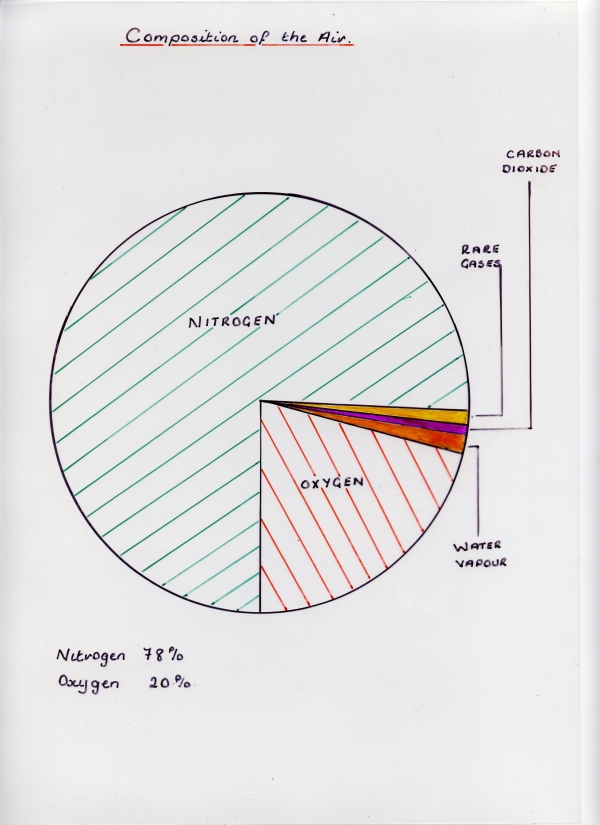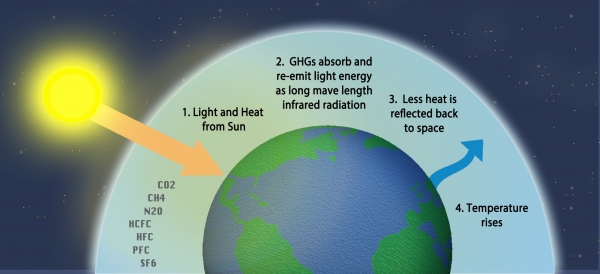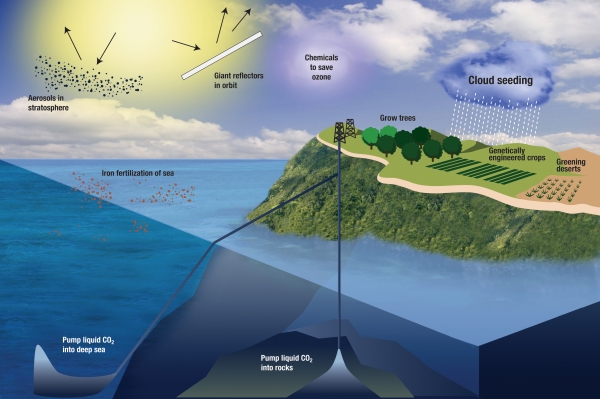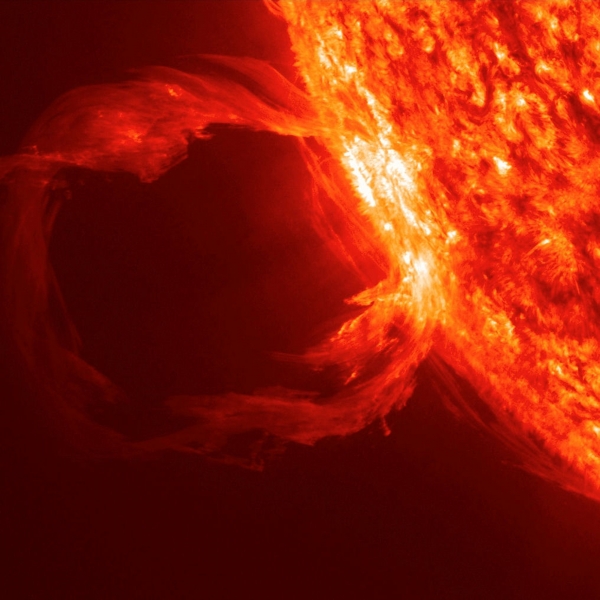Earth’s Atmosphere:
Atmosphere:-
The earth is surrounded by a mixture of gases known as atmosphere.
The studies of the atmosphere and the various physical, chemical and dynamical processes taking place in it are called as atmospheric sciences.
Atmosphere is the physical mixture of gaseous which surrounds the earth on all sides. It is a mobile, compressible and expansible. The height of atmosphere from surface is about 400kms.The density of air decreases, so rapidly with altitude that half of the atmosphere lies within 5.5kms than the surface and nearly 75% of the atmosphere lies up to 11kms.
Characteristics of atmosphere: -
The atmosphere differs from the lithosphere and the hydrosphere in many respects:
1. Air is the colourless, odourless and tasteless substance.
2. Air is a mobile, elastic and compressible.
3. Air is not as dense as land or water. It has weight. The pressure it exerts on the surface is called the atmospheric pressure.
Importance of atmosphere: -
1. All life forms cannot exist without atmosphere.
2. Living organisms depend on the availability of water.
3. Animals need oxygen and plants need CO2.
4. It is the atmosphere that provides most of the oxygen and carbon dioxide and maintains the earth system.
5. It is the atmosphere which maintains the temperatures that suit us. In the absence of atmosphere there would have been great extremes of temperature to the tune of 260O.C between day and night.
6. The atmosphere protects as from the much of the sun’s ultraviolet radiation, which is injurious to plants and animal life.
7. The currents, motion and various other activities of the atmosphere are combining together to produce weather.
Importance of atmosphere for agriculture:-
1. It provides oxygen, which is useful for respiration in plants.
2. It provides CO2 to build biomass in plant through photosynthesis.
3. It provides nitrogen, which is essential for plant growth.
4. It protects life from harmful effects of U.V. rays.
5. It acts as a medium for transformation of pollens.
6. It maintains warmth to plant life.
7. It provides water to field crops through precipitation, as it is a source of water vapour, clouds, etc.
Composition of atmosphere:
The atmosphere is a mixture of many gases. The important gases comprising dry air in the
lower atmosphere are:
Nitrogen and oxygen make up approximately to 99% and remaining 1% by other gases. In addition to gases it contains large quantities of solid and liquid particles. The lower part of the atmosphere contains water vapour from 0.02 to 4% by volume, innumerable dust particles, silt particles, smokes, pollens etc, are also present in the atmosphere. They are microscopic and hygroscopic, and play an important role in absorption and scattering of insolation.
Divisions of atmosphere: Atmospheric division based on temperature distribution in the atmosphere:-
The atmosphere is divided vertically in to four layers.
1. Troposphere
2. Stratosphere
3. Mesosphere
4. Thermosphere
The characteristics of each layer are given below: -
1. Troposphere: -
• The word “Tropo” means mixing or turbulence and “sphere” means region or layer.
• This is the lower layer of the atmosphere. The average height of this layer is about 14 km above mean sea level. At the equator it is 16km and at the poles it is 7-8 km height.
• Under normal conditions the height of the troposphere changes from place to place and season to season.
• This is layer is called the “ seat of all weather phenomena” because various types of clouds, cyclones and anti-cyclones occur in this sphere due to the concentration of almost all the water vapour, dust particles etc, in it.
• Generally there is decrease of temperature with increasing height at a normal lapse rate of about 6.5°C per kilometer.
• The wind velocity increases with height and attain the maximum at the top of this layer.
• The troposphere is heated from the below because most of the radiation from the sun is absorbed by the earth’s surface.
• In this layer about 75% of total gases and most of the moisture and dust particles are present.
• At the top of the troposphere, there is a narrow layer separating it from the stratosphere, which is known as the “Tropopause”. It is a transitional zone and it is a characterized by no major movement of air.
2. Stratosphere: -
• This is a layer exists above the tropopause and extends to altitudes of about 50-55 km from the surface. This layer is called as a “seat of photochemical reactions”.
• In this layer temperature remains practically constant at normal 20 km and is characterized as isothermal because the air is thin, clear, cold and dry.
• In the upper part of the stratosphere the temperature are almost high as those near the earth’ surface, which is due to the fact that the ultraviolet radiation from the sun is absorbed by ozone gas in this system.
• Less convection (upland transport or vertical movement) takes place in the stratosphere because it is warm place at top and the dry and cold at the bottom.
• Wind speed is higher and circulation pattern exists.
• The upper boundary of the sphere is called the stratopause is the transition zone between troposphere and stratosphere. Above this layer there is a steep decrease in temperature.
• There is a maximum concentration of ozone between 30 and 50 km above the suface of the earth and this layer is known as the ozonosphere.
• The ozone has a property of absorbing ultraviolet rays. Had there been no ozone in the atmosphere life would not have existed on the earth.
•
3. Mesosphere: -
• The layer between 50 and 80 km is called as mesosphere.
• In this layer the temperature decreases with height.
• The upper bounding of this layer is called the mesospause. It is the transition zone between stratosphere and mesosphere.
4. Thermosphere or ionosphere: -
• The thermosphere or Ionosphere lies beyond the mesosphere at a height about 80 km above earth’s surface and extends up to 400 km.
• The atmosphere in the thermosphere is partly ionised. Enriched ion zones exist in the form of distinct ionised layers. So, this layer is called as the ionosphere.
• According to some climatologists the layer between 80 and 140 km is known as the thermosphere and beyond that Ionosphere exists.
• The ionosphere reflects the radio waves because of multiple reflections of radio wave beams from the ionised shells. So, long distance radio communication is possible due to this layer.
Exosphere: -
The outer most layer of the earth’s atmosphere is names as the exsosphere and this layer has beyond 400 and 1000 km. Hydrogen and Helium gases predominate in this outer most region. The density of atoms in this layer is extremely low. So, there is no collision between the neutral practices.
Temperature variation
Isotherms: It is a line joining places having equal atmospheric temperature on a geographical map.

Composition of air
Earth atmosphere
Greenhouse effect
Layers of atmosphere
Ozone Layer
Solar Flare

